Posts Tagged ‘Hens’
Little Bits, Big Meal
Little bits of anything are often forgotten about or viewed as not useful. But at our house little bits mean we not only use up food that might go to waste in other homes, but we also put a wonderfully satisfying meal on the table. Take the quiche and peach popover above. It was made with two slices of bacon, two mushrooms, a 1/4 of onion thinly sliced, left over half and half cut with some milk to make the needed amount, eggs from our hens and a pie crust. The extra pie dough was rolled out big enough to hold 1/2 a peach sliced and tossed in sugar and spices. The rest of the peach was eventually chopped and sprinkled over the vanilla ice cream that accompanied the popover. The whole meal used small amounts of many things to make one deliciously filling meal after a long day of work on the farm.
So…the next time you are tempted to toss those little bits, don’t. Find a way to use them. Little bits of meat and veggies can be sliced and tossed over a salad. Or, if you can’t find a way to use them now, freeze them to be used in hearty soups chalk full of veggies and meat, or put them in stews and create a belly filling supper perfect for the coming cold weather months.
Simple Wealth and Winter Preps
September is here, folks! I can hardly believe it is just one month until my beloved October. The thought of it makes my heart swell.
This long Labor Day weekend started early with a steel gray glimmer of morning and a breeze that glided over me, soft and cool; the first gentle kiss of autumn. It was still in the 50’s when I ventured outside in my sweatshirt and muck boots, watering and feeding chickens and rabbits. There are no leaves falling yet, but the world is changing, moving ever so slightly from one season to another. You can feel it in the sunrise. You can feel it in the change from our blistering August heat wave. You see it in the evening as the sun sets farther to the south and the rising moon throws a golden cast over the farm.
We are picking tomatoes and zucchini almost daily, little shards of insurance for a small family. A pint-sized mason jar filled with fresh herbs sits on the windowsill sending a wave of fragrance through the house. My lone sunflower is beginning to bloom, tall and big and yellow; the last survivor from marauding birds and scavenging chickens, and a few apples hang on the tree growing fat and juice, until they are plucked off and put into a pie or cobbler or spice bread. Some of the older hens that were beyond being good layers and a rooster were taken to the feed store to be given away. I’ll hold on to the few good layers I have until spring then think about increasing the flock. Production is a big deal on our little farm and those who can’t pull their weight in stocking the kitchen don’t stay around to waste precious feed. Sounds harsh I know, but that’s the reality of farm life.
Winter preps are still at the forefront of my mind. I feel an urgency about getting this farm settled for a long winter, maybe even more so than in past years. The agricultural meteorologist, the one all the farmers listen to for weather forecasts, is calling for an El Nino winter; and that can mean only one thing — RAIN — and lots of it. Making sure the farm is set to handle such storms drives my actions.
The new batch of meat birds is slatted to arrive next week and now that the opossum family has been caught and relocated I am more excited than ever to get some meat in the freezer. I still have a few half chickens left. There are also packages of lamb, the ducks we raised in spring and containers of soup base and cooked down chicken carcasses that can be made into casseroles and potpies. The pantry is pretty well stocked with dry goods like beans, lentil, rice, barley and pasta; all the makings for a hearty and warm winter meal; and with Brianne off to college even the smallest amount of meat and veggies seem to go farther. Even with all this, I’ll make a stock up trip to fill in and take advantage of prices before we see increases caused by this summers’ drought.
The greenhouse now has a roof, a barrier from the wind and rain. The plan is to finish the walls this weekend. With any luck the whole thing will be done in a week or so and I can begin planting root veggies and salad greens in the fall garden. Maybe I’ll even try a few potted veggies that can stay in the greenhouse over winter. One of the nice things about living in an area where you can garden 365-days is that we do not have the pressure to “get seeds in the ground” like other areas of the country.
I still have firewood to bring in and the house to switch over from summer to winter. My list is made and it’s thrilling to cross things off. By the time wood smoke circles the farm we’ll be ready, mark my words. This will be a warm and comfy farm house, glowing and smelling of winter.
I am smiling, folks, for these are all small banks of insurance. Money may be nice, but it can’t beat a warm stew fresh from the farm. Now that’s simple wealth!
27- Days to Change the Way We Eat
I once read that it takes 27 days to change a habit, either good or bad. 27-days to stop smoking, start a diet and stick to it, or make exercise part of your daily routine. In 27 days the “new” habit has formed in the brain and becomes second nature, you do it without thinking.
So why am I telling you all this?
Because today is Day One of a 27-day family challenge to eat more locally, buy locally and consume locally. It’s a personal challenge I know, but one I hope many of our readers will champion as well. If we stop and look (or research) what is available in our county I think we would all be surprised at how many of the ingredients needed to make a meal can be found in close proximity to where we live. I have to admit that even I sometimes forget what can be found just a few miles from my home.
The challenge will mean a lot of cooking at home, eating harvested animals, shopping in the pantry (or the garden), at farm stands and Farmer’s Markets, and much more. What it doesn’t mean though is giving up on condiments, spices, tea and staples I already have on hand like flour, sugar, olive oil, rice, beans and pasta. I’ll document our progress, and be honest about the pit falls: added work of making bread on a Tuesday after work, the challenge of gardening with a full-time job and a kid in school and the sabbatical my hens sometimes go on, leaving us with no eggs for days.
It will also mean a few sacrifices (swearing off Dr. Pepper and Mint Chip ice cream for starters, but that’s not necessarily a bad thing.). We’ll be eating within 60 miles of our home (the size of our county) and sometimes 60 feet from our own back door for the next 27 days; and not for the reasons you may be thinking of – supporting the local farm economy, increase in transportation costs of goods, factory farms, high intensity animal feedlots…that kind of thing. Nope, none of that.
We’re doing this for a lot of reasons, but mostly because we want to make a permanent change to the way we think about our food. We want to jumpstart our dedication to growing even more of our own food and buying what we don’t as locally as possible. I want to know how much effort it will take and how much cheaper (or expensive) it is to truly eat where we live. So, for the next several weeks I’ll be writing about all the gory details and shining triumphs, along with some of the recipes I used just to entice all of you to jump on board.
Here are a few of our ground rules:
- Shop at home first (freezer, larder, pantry, garden, barn).
- When needed, shop local farm stands and farmers markets.
- Buy, barter or trade for local meat we don’t raise ourselves.
- Bake from scratch (wheat is a CA crop, but not farmed locally. It comes from 100 miles away, but is milled into flour 50 miles away. Works for me).
- Source relatively local dairy products.
- Cold turkey on candy, chips, sodas, fast foods, etc. (although these are not big items at our home, just the idea of it may kill Brianne).
- Eat three square meals a day, plus snacks.
- Staples, condiments, oils, spices and seasonings already on hand are allowed.
- Drink at least ½ gallon of water a day.
- Walk at least 3 miles day.
Sound like a plan? Stay tuned to see how we faire.
City Farmers under Attack – Again!

I recently found this article “Are “DIY Slaughter Hobbyists” Destroying Your City?” in an Oakland, CA newspaper and wanted to share it with you.
We all know that the practice of farming in the city, homesteading a suburban lot, growing your own food on a condo balcony, is not everyone’s cup-of-tea, but to promote the practice as harmful and elitist is nothing short of ludicrous. I’m sure many people have had run-ins with uneducated neighbors, people who are ignorant about where their food comes from and how it is produced, and wish to remain that way. But, exactly how does raising animals qualify as harmful? And, when exactly did growing your own food, for food safety sake become an elitist activity that separates us from the less fortunate people in our neighborhoods. It begs the question.
Up until WWII it was commonplace for city dwellers with any amount of property to have a small flock of hens for eggs and meat, a garden for fruits and vegetables, all the while making soap and candles in their backyards to boot. The practice was even encouraged by city fathers as a way for people to eat better and more regularly without impacting or over burdening the food supply.
But now commonsense and self-reliance has left most people. And what has filled the void is dependence on others to feed us, ignorance about where food comes from and how it gets to us, but most of all, complete laziness about taking care of one’s self. Most people would rather put the responsibility of care for their family on other people – farmers to grow the food, processors to make into something that can be thrown in a microwave because people no longer cook, trucking companies to get the food within a few miles of them and a government to give it away for free when people no longer feel like fending for themselves.
Backyard farming is not a practice that should be run out of our neighborhoods, but one that should be encouraged and supported, not only by our fellow neighbors, but by city governments as well. There is so much good, besides good food that can come out of backyard farming, like education and the interconnectedness of man and animals and plants, connection with the natural world, healthy exercise, and an understanding of how our small farm fits into the bigger picture of world agriculture.
Fortunately for me my neighbors are kind, understanding and often times curious about what we do and why we do it, which has led to many great conversations and even a few new flocks of chickens on the street. Even so — I think I’ll give them a carton of eggs just to be safe.
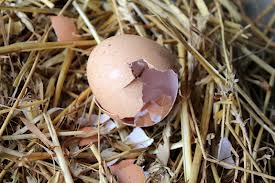
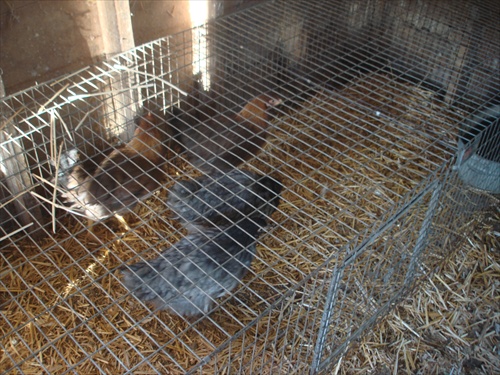
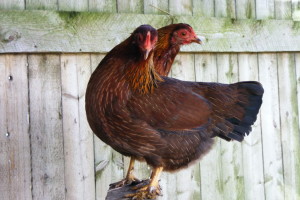
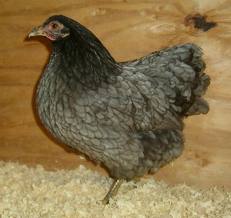
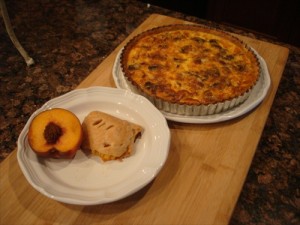
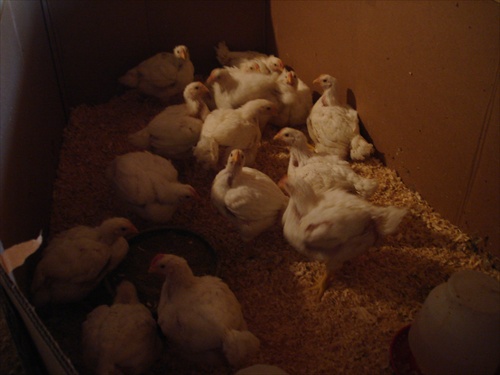

 We’ve had a busy week so far and tonight was the first time it seemed like we could relax a bit while going about the nightly chores. It was nice outside. We’ve had a strange winter of fluctuating temperatures, rain and wind storms. One day its cold and winter like, the next the thermometer shoots up to 70 and somewhere in between the winds from the east start to howl. My poor fruit trees don’t know whether to flower or go dormant and a few bulbs are already pushing their heads up out of the ground.
We’ve had a busy week so far and tonight was the first time it seemed like we could relax a bit while going about the nightly chores. It was nice outside. We’ve had a strange winter of fluctuating temperatures, rain and wind storms. One day its cold and winter like, the next the thermometer shoots up to 70 and somewhere in between the winds from the east start to howl. My poor fruit trees don’t know whether to flower or go dormant and a few bulbs are already pushing their heads up out of the ground.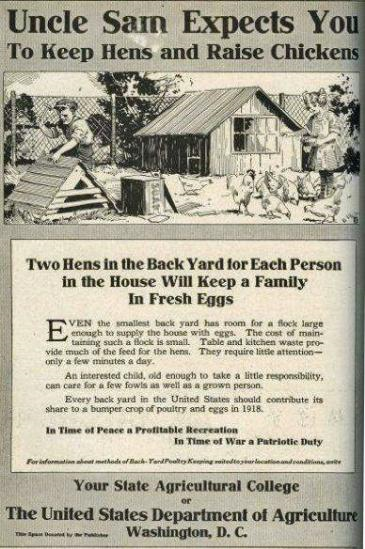
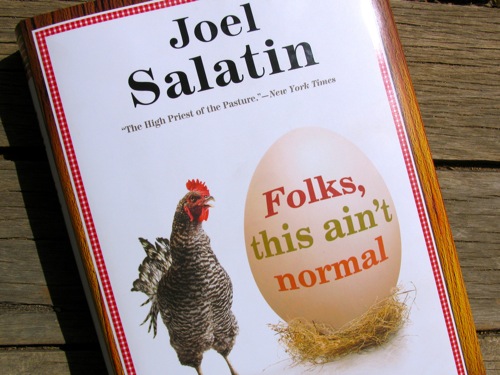
Recent comments
Aenean nonummy hendrerit mauris. Phasellus porta.